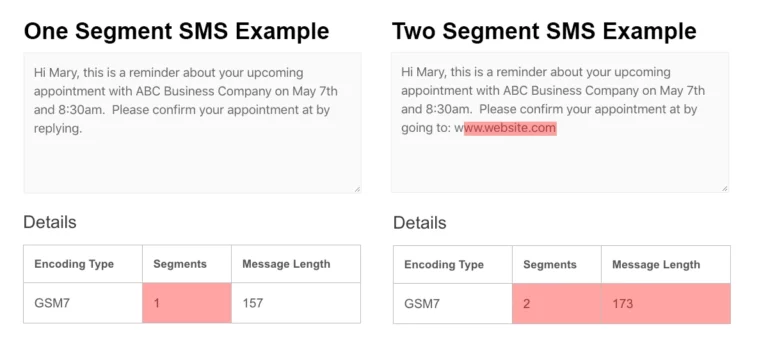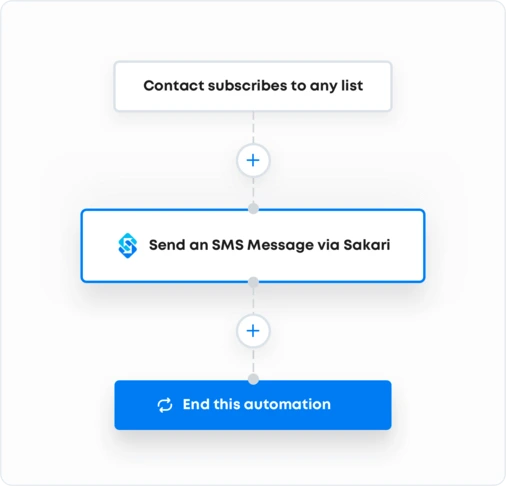Holiday SMS Marketing Strategies and Examples
Boost holiday sales with SMS marketing strategies. Learn how to create impactful seasonal SMS campaigns to engage customers and promote holiday deals.
Struggling with SMS marketing? Discover tips to refresh stale campaigns, fix common mistakes, and boost conversions with this survival guide to SMS online.

Is your texting campaign stuck in a rut? Or maybe it never quite hit the ground running? Don't worry—you're not alone! With the right tips and tricks, you can turn things around and get your SMS communications back online.
In this complete guide to online SMS texting for businesses, we'll cover some red flags that may signal a problem with your SMS marketing campaign and simple tweaks that can make a big difference in your results.
The average person checks their mobile phone every 12 minutes, or about 80 times a day.
That means your customers are always just a text away—but only if your SMS campaigns are hitting the mark. If you’re ready to make your messages impossible to ignore, follow these tips to optimize your strategy and re-engage your audience.
When your SMS campaign isn’t quite hitting the mark, it could be a compliance issue. If your messages are going straight to spam or if they’re getting blocked, then you’re fighting a losing battle.
Here are some key tips for staying compliant:
Register your business. Ensure your messages are getting sent and delivered by registering your company and each messaging campaign with The Campaign Registry (TCR). This confirms that you and your text message marketing activities are legitimate.
Have consent from your contacts. Under the Telephone Consumer Protection Act (TCPA), businesses are not allowed to send text messages to consumers without their consent. Examples of contacts giving consent to receive SMS messages, or opt-in, include providing their phone number on a website form fill, texting a keyword seen on an ad to a company number, or subscribing to your SMS service.
Always provide an opt-out option. It’s just as important to let SMS subscribers opt-out or unsubscribe to your texts. A simple “Reply STOP to cancel” can protect your integrity.
Understand the privacy laws in your country or state. SMS regulations can differ from country to country. In the U.S., SMS compliance is governed by the TCPA, but other regions, like the U.K. or Australia, may have their own rules. Make sure you understand the SMS text compliance guidelines in your area to avoid penalties. Check out our A2P 10DLC compliance guide for more information about regulations in the United States.
One of the most effective ways to revitalize your business text messaging is through personalization. A personal approach can significantly boost response rates and customer engagement.
Here's how you can personalize your texts for more effective communication:
Use personalization tokens. Integrations with platforms like HubSpot and Pipedrive allow you to dynamically insert your contact’s name, birthday, or organization into your text messages. This helps your messages feel more personal and relevant, increasing the chances of click-through rates.
Show some personality with emojis and GIFs: Want to make your texts more engaging? Adding emojis can brighten up your messages, while multimedia messages (MMS) allow you to send images or GIFs. Keep in mind that not all SMS providers can support this functionality— but, Sakari does!

This should be a known rule of thumb. One of the quickest ways to alienate (or infuriate) your entire contact list is by overwhelming them with too many messages. When sending messages, keep things balanced and respectful—otherwise, you might start seeing a high opt-out rate.
Here’s how to avoid spamming your contacts:
Find the right frequency of messaging for your type of business. The industry guidelines for sending SMS are about 2-6 text messages per month or 1-2 times a week. The goal is to stay top of mind without becoming overwhelming.
Make sure the messages you are sending have relevance. If a contact signed up to receive information on upcoming holiday discounts, make sure your texts are focused on that. If a contact opted in for promotional messages about upcoming discounts, then make sure your texts align with that. Sending irrelevant SMS marketing messages can lead to unsubscribes, distaste, and distrust.
Texting online offers flexibility, but timing is still crucial. Avoid sending text messages during the weekends and outside of business hours- don’t be the one sending a demo invite on Saturday at 2 am!
When you see your cell phone notifications blowing up, the last thing you want is a slew of long texts from a business or doctor’s office. Sure, it might remind you to get your oil changed or schedule a follow-up appointment— but more likely, long blocks of text will just get passed over.
Here’s how to craft more compelling texts:
Get to the point! Your messages should be brief and easy to read. No one wants to wade through long paragraphs of text on their mobile device. You can use Sakari’s free SMS Length Calculator to calculate the message segment length and character count of your text message. Try to get your point across in 100 characters or less.
Include a call to action. Every SMS text should include a clear call to action (CTA). Whether it's to visit a link, reply to the text, or buy new products, the CTA should be understandable and actionable. Remember, not every text has to be transactional, but they do need to be intentional.

Automation is a game-changer when it comes to SMS communication. How? Glad you asked!
Sakari’s services allow you to integrate with CRM platforms and then build texting campaigns based on custom triggers and templates. For example, if you want to send a text message to a phone number immediately after a contact submits a form, you can build an automated workflow that allows you to send an online SMS within seconds of that trigger. Setting up workflows based on triggers ensures your messaging is timely and relevant.
Here are a few ways you can optimize your online SMS campaign with automation:
Automated appointment reminders: For businesses like healthcare providers or service companies, setting up automated appointment reminders can reduce no-shows and keep your business running smoothly. Integrate with your CRM to automate these reminders based on your contact list.
Real-time notifications: You can also use automation to send real-time SMS notifications for order confirmations, shipment updates, or other time-sensitive information. This functionality keeps your customers engaged and informed, making them more likely to respond positively.

Without measurable metrics, your organization can’t verify whether or not your SMS strategy is successful.
Here’s how to measure the effectiveness of your SMS marketing strategy:
% Open rates and click-through rates. Look at your open rates and click-through rates (CTR) to gauge whether your messages are resonating. Low open rates could mean your subject lines or initial message aren’t compelling enough. Poor CTR suggests your CTA isn’t strong or clear.
Track response rates. A high response rate is a good indicator of engagement. If your responses are lacking, your content might need to be more personalized or actionable. Make sure you choose an online texting provider like Sakari that offers two-way texting capabilities.
Establish a monthly average for opt-outs. It’s inevitable: people will unsubscribe from your email marketing and text campaigns. And that’s normal! What’s not normal, is a sudden spike in unsubscribes— which is a sign that something’s off. Use this data to analyze what’s causing people to drop off and adjust your approach accordingly.
With these tips and strategies for effective online SMS, you’ll be well on your way to refreshing your SMS marketing campaigns and getting back on track. Always remember that a thoughtful, well-executed SMS marketing strategy can drive customer engagement, boost sales, and provide your business with a cost-effective way to communicate.
If your business wants to use SMS online, you can try it free for 14 days with Sakari. There’s no credit card required and the initial setup takes about 60 seconds. The free SMS trial plan includes $5 of messaging credits for you to try out all the tools and features.
Low open rates can be caused by poor timing, irrelevant content, or a lack of trust in your sender ID. Consider revisiting your audience targeting, send times, and message personalization.
High opt-out rates often signal that your messages are too frequent, irrelevant, or overly promotional. Try focusing on value-driven content and sticking to a consistent but not overwhelming frequency.
If your click-through rates are low, your call-to-action (CTA) might not be clear or compelling. Test different CTAs, offer incentives, and ensure your links lead to mobile-friendly pages.
Delivery issues could be related to carrier restrictions, invalid phone numbers, or a lack of opt-in compliance. Verify your contact list and ensure your messages meet compliance standards like the TCPA.
Track key metrics like open rates, click-through rates, opt-ins, and opt-outs. Use these insights to refine your strategy and focus on what’s working.
Low conversion rates can result from unclear messaging, a lack of urgency, or poor alignment between your message and the landing page. Make sure your call-to-action is specific, compelling, and directly leads to an easy-to-navigate, mobile-friendly page. Consider A/B testing different approaches to see what resonates best with your audience.

Adam is the Co-Founder of Sakari. Sakari is a business SMS service for sending text message alerts, reminders, events and notifications to customers and employees, wherever they are. Manage your entire business messaging in one location, with unlimited users, branch accounts and integration with over 1,300 applications.
Your email address will not be published
Boost holiday sales with SMS marketing strategies. Learn how to create impactful seasonal SMS campaigns to engage customers and promote holiday deals.
Maximize your Black Friday and Cyber Monday sales with strategic SMS marketing. Learn the latest consumer trends and how to leverage SMS for...
Discover how to effectively send bulk SMS messages with our quick start guide. Master bulk SMS marketing with Sakari.
With our 14-day free trial, you can dive in and explore all these features, with no commitment.